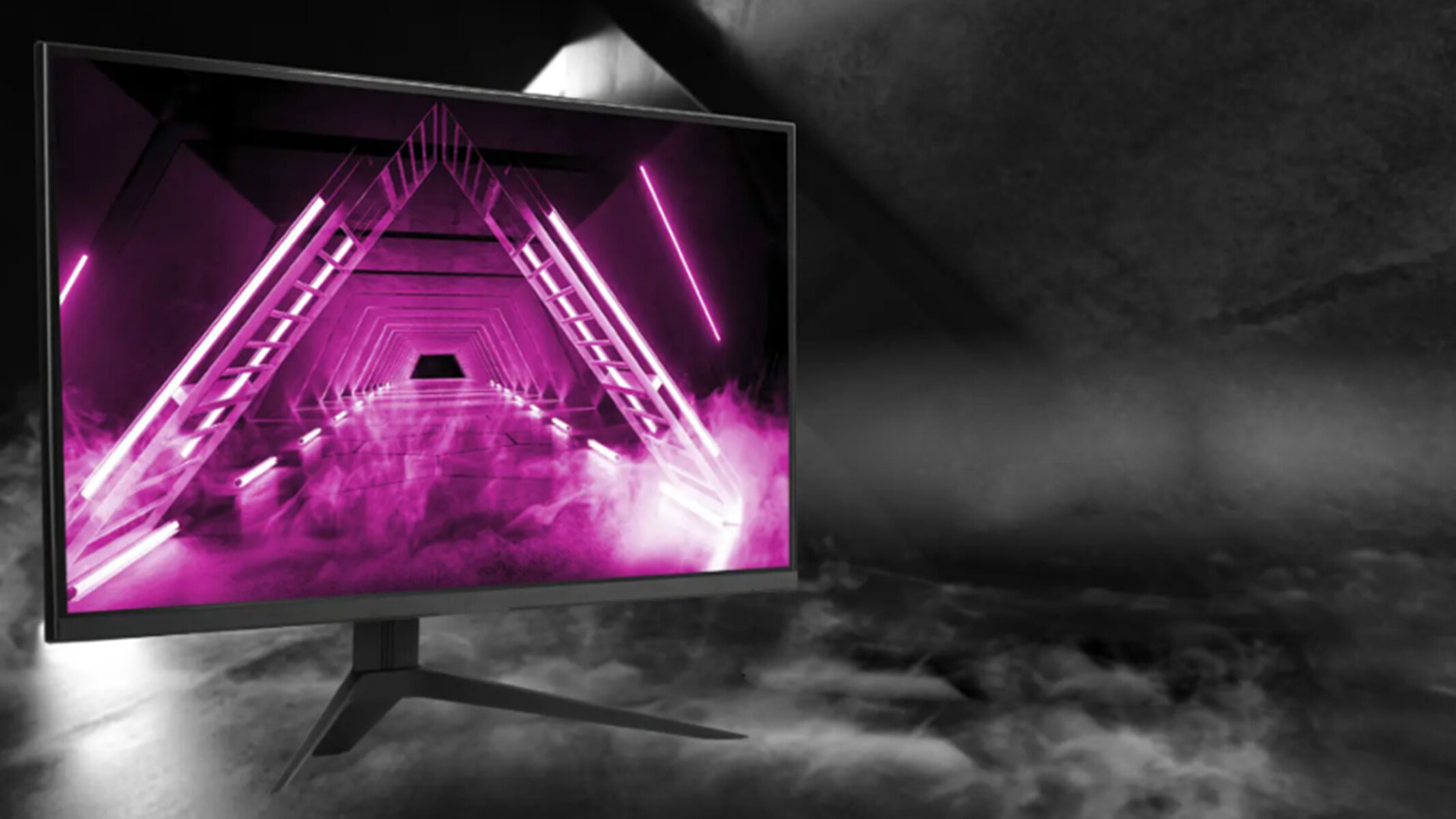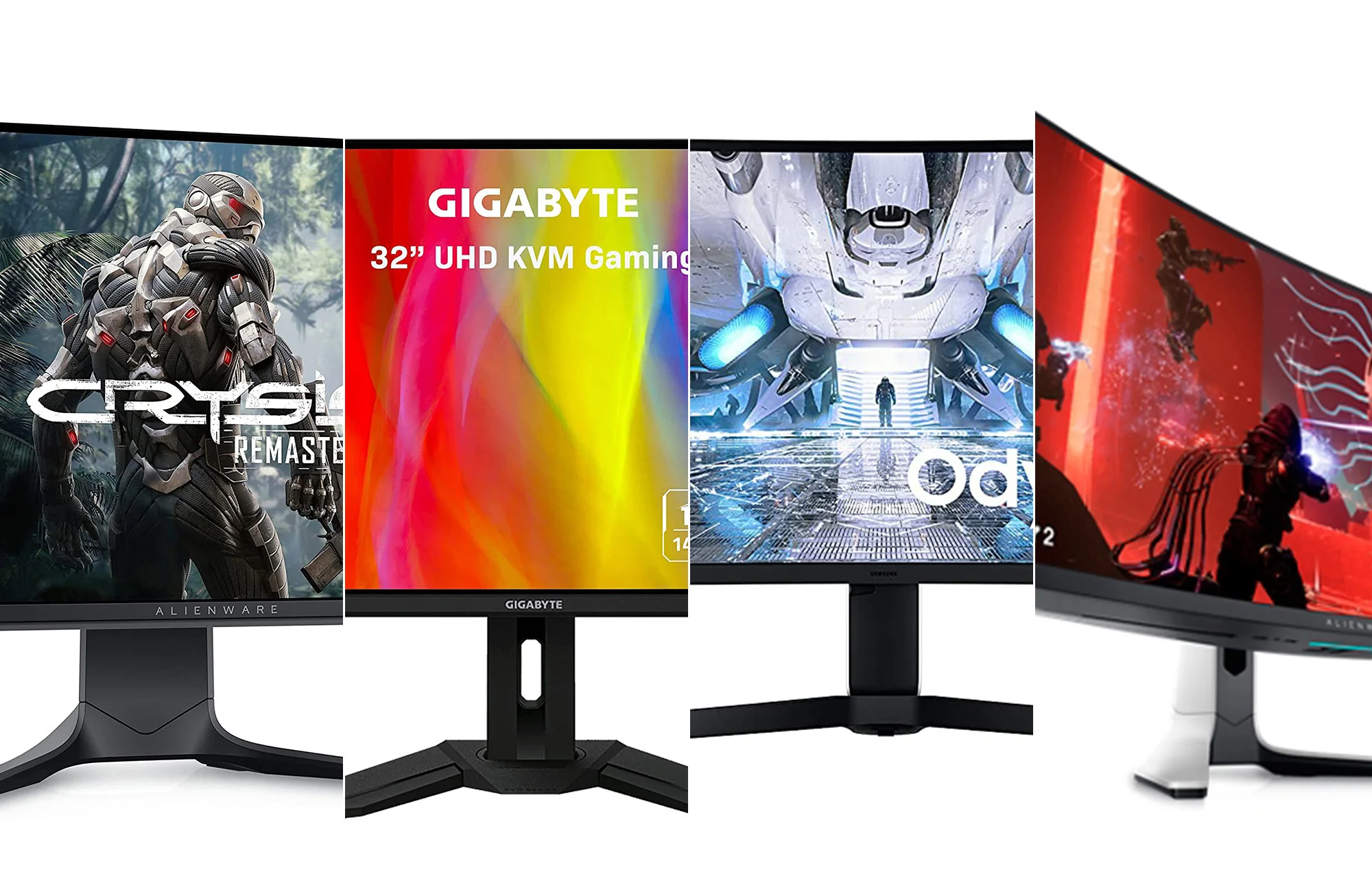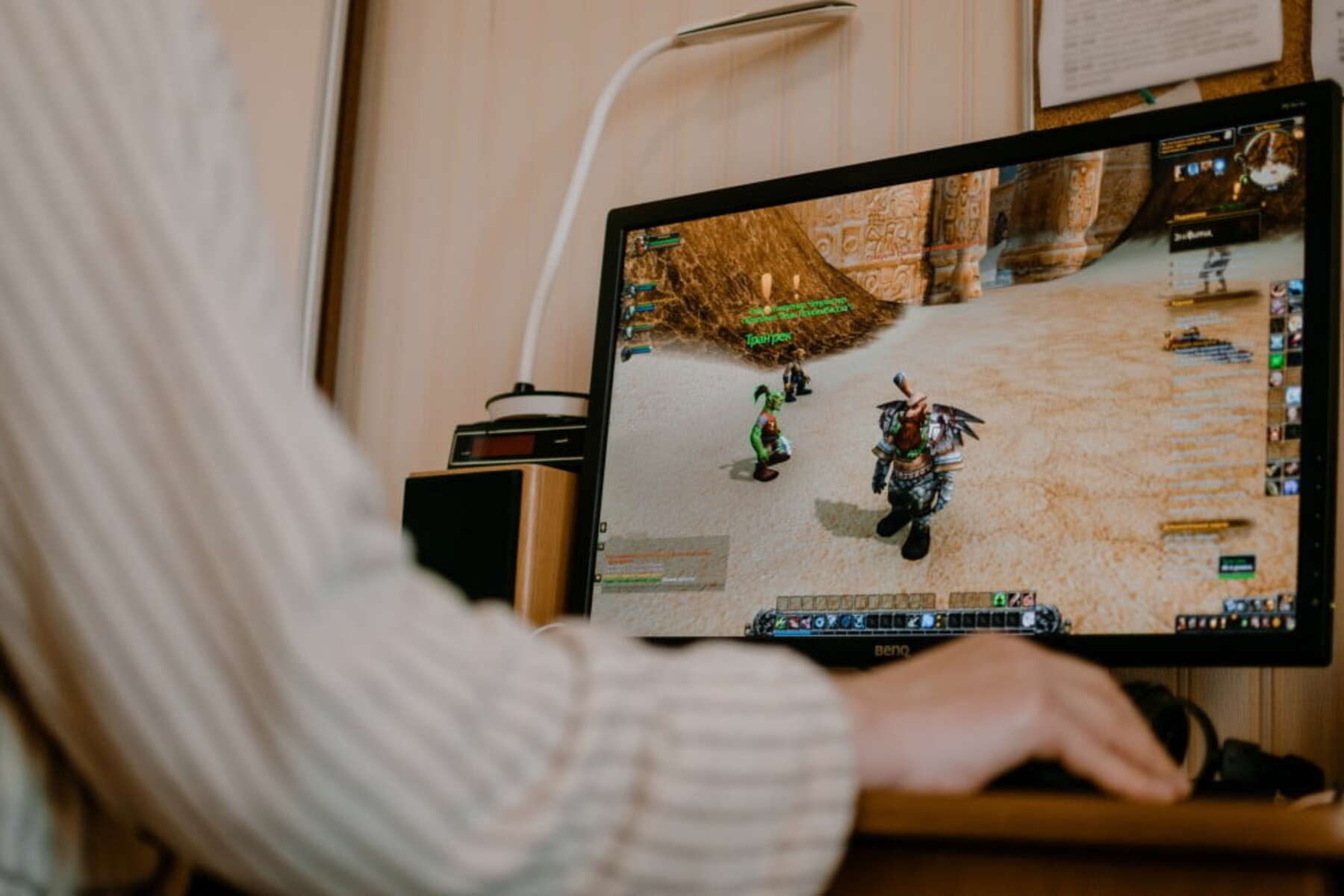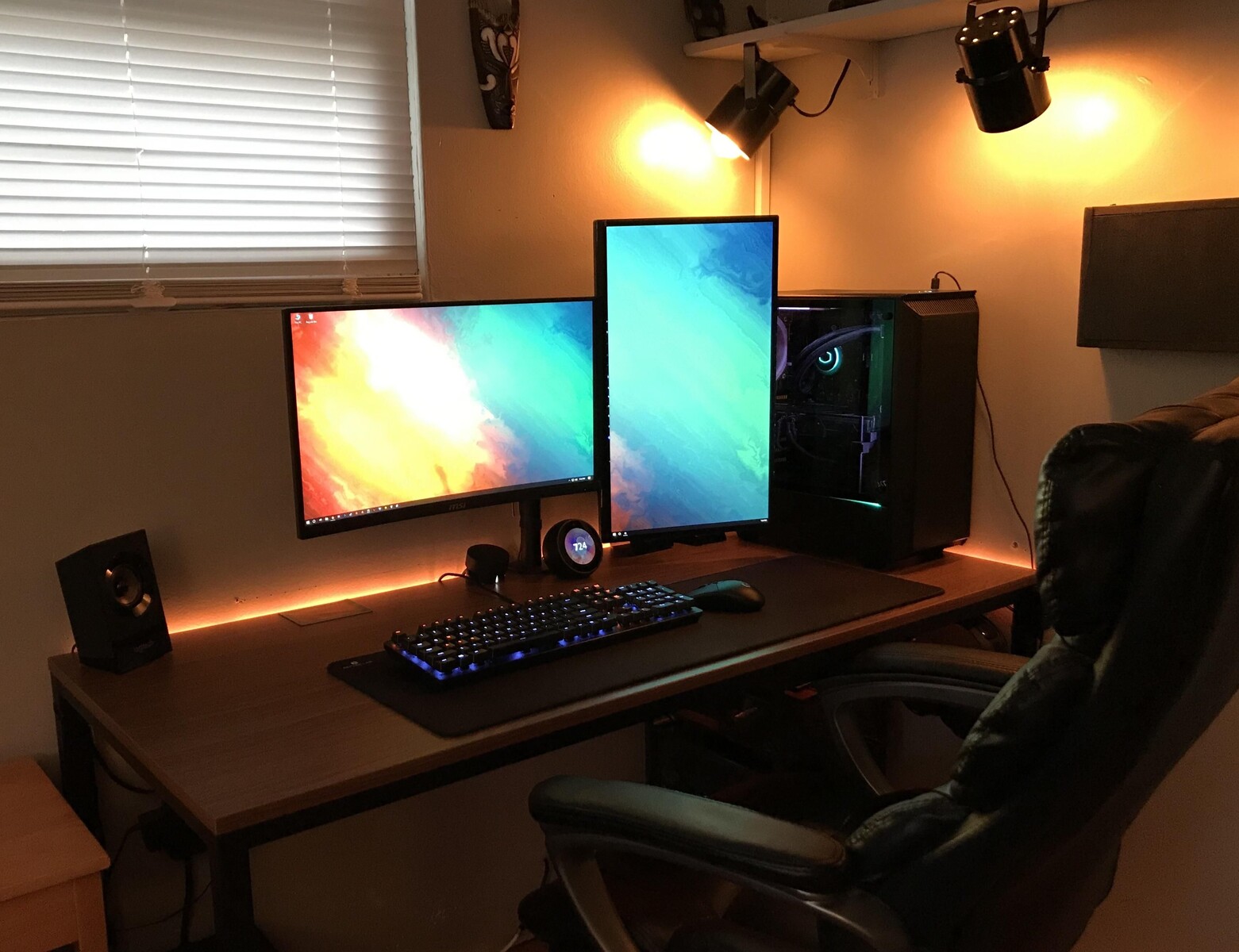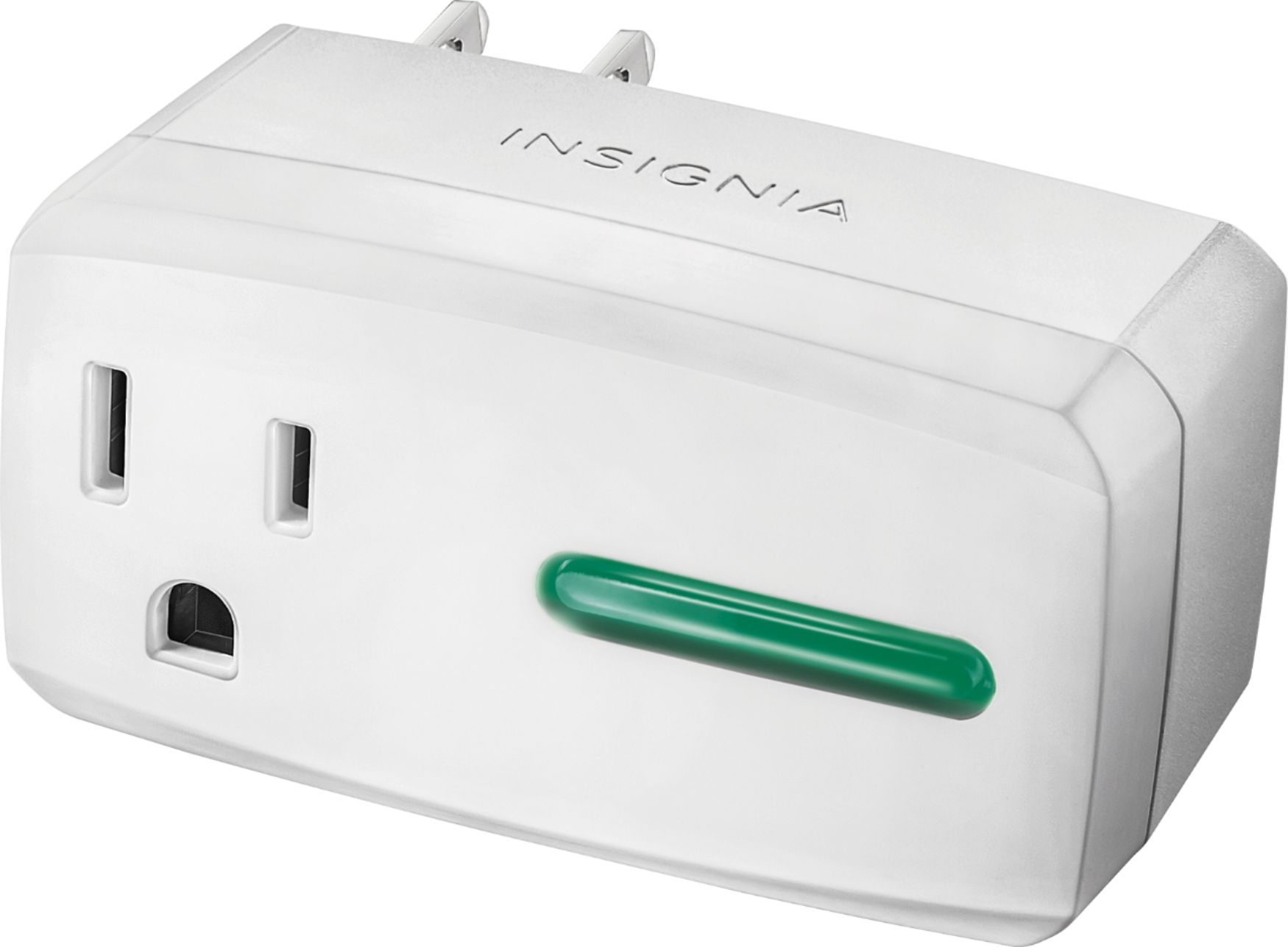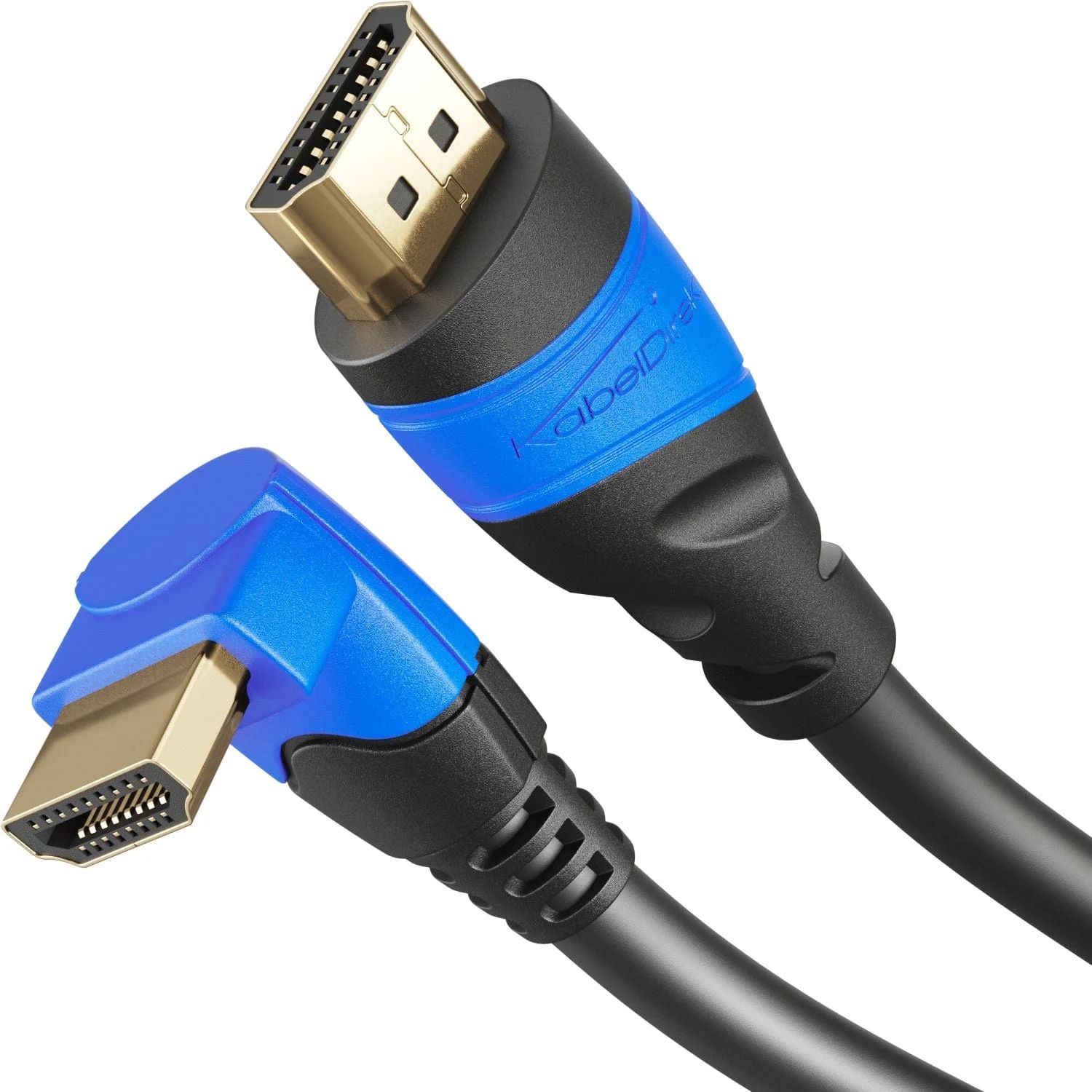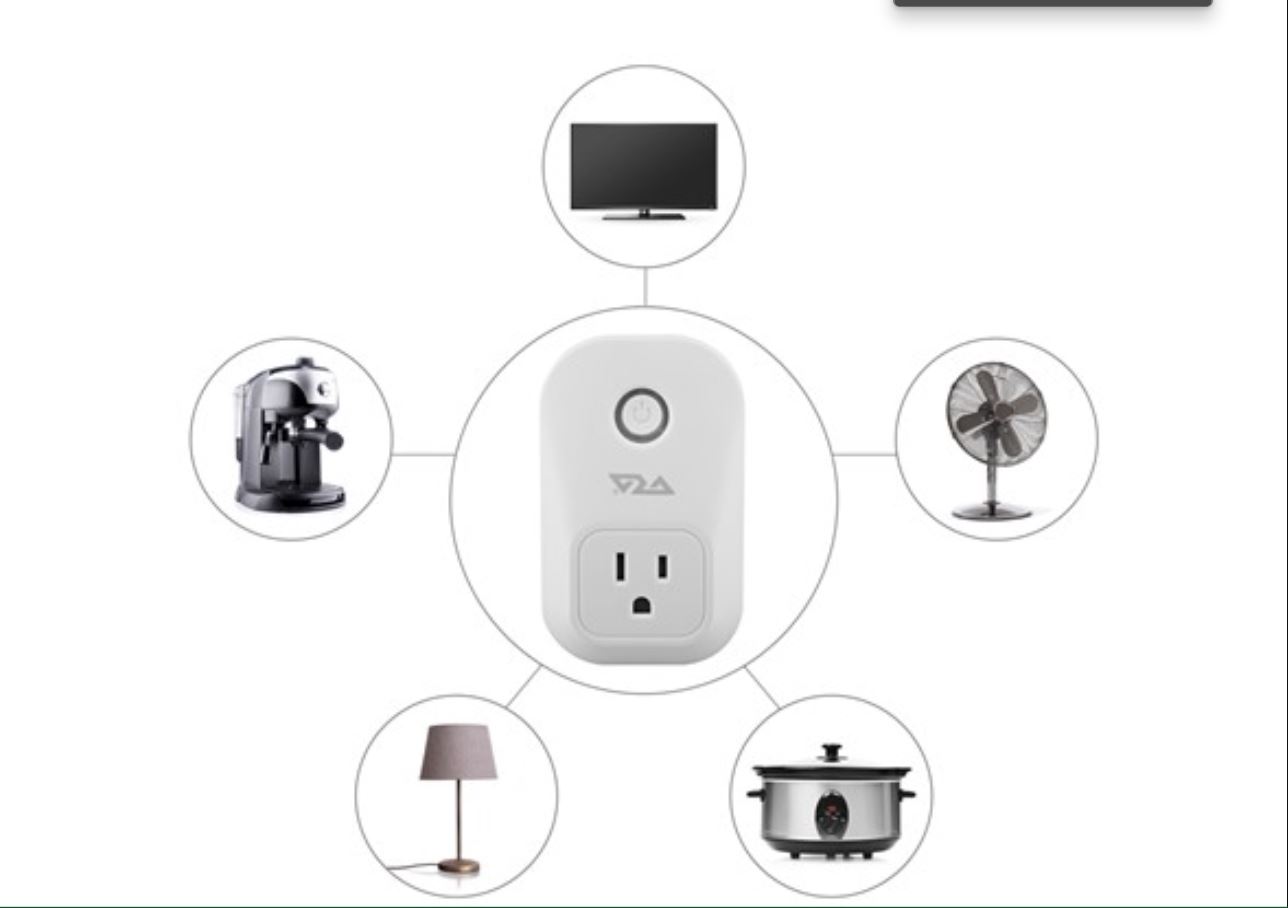Introduction
Gaming has evolved from a simple hobby to a competitive sport, and gamers around the world are constantly looking for ways to enhance their gaming experience. One often overlooked aspect of gaming is the choice of gaming monitor. While it may seem like a minor detail, the monitor you choose can significantly impact your overall gaming performance and enjoyment.
A gaming monitor serves as the gateway between you and your virtual world, displaying the graphics, colors, and motion that bring your games to life. It serves as the canvas for your gaming adventures, and its quality can impact your ability to spot enemies, react quickly, and immerse yourself in the game.
There are several key factors to consider when choosing a gaming monitor, including display resolution, refresh rate, response time, panel type, screen size, adaptive sync, connectivity options, and price range. In this article, we will explore each of these factors in detail to help you understand their importance and make an informed decision when purchasing your next gaming monitor.
Whether you’re a casual gamer or a professional e-sports player, investing in a gaming monitor that aligns with your gaming needs can take your gaming experience to the next level. So, let’s dive into the world of gaming monitors and discover just how much they can matter.
Display Resolution
One of the crucial factors to consider when choosing a gaming monitor is the display resolution. The display resolution refers to the number of pixels that can be displayed on the screen. It directly impacts the sharpness and clarity of the visuals you experience while gaming.
The most common display resolutions for gaming monitors are Full HD (1920×1080), Quad HD (2560×1440), and Ultra HD or 4K (3840×2160). Each resolution offers a different level of detail and image quality.
If you are a casual gamer or have budget constraints, a Full HD monitor should suffice. It provides a decent level of detail and is compatible with most games. However, if you want more immersive and detailed visuals, especially in visually-intensive games, a Quad HD or 4K monitor will be a better choice. These resolutions offer sharper images and allow you to see more details in the game world.
It’s important to note that higher resolutions require more powerful hardware to drive them effectively. Make sure your graphics card and system can handle the demands of the chosen resolution to avoid performance issues.
In summary, the display resolution of a gaming monitor plays a significant role in determining the level of detail and visual quality of your gaming experience. Consider your budget, gaming preferences, and the capabilities of your hardware when deciding on the display resolution for your gaming monitor.
Refresh Rate
The refresh rate of a gaming monitor is an important factor that affects the smoothness and fluidity of the visuals on your screen. It refers to the number of times the monitor refreshes the image per second, measured in Hertz (Hz).
Most gaming monitors offer a refresh rate of 60Hz, which means the image is refreshed 60 times per second. While 60Hz is sufficient for casual gamers, competitive gamers often opt for higher refresh rates, such as 144Hz or even 240Hz, to gain a competitive edge.
A higher refresh rate results in smoother motion and reduces motion blur, making fast-paced games feel more responsive and immersive. It allows you to react faster to in-game action, giving you an advantage in competitive gaming scenarios.
However, it’s important to note that achieving high refresh rates requires a powerful graphics card and a compatible system. Without a capable setup, you may not be able to fully utilize the benefits of a high refresh rate monitor.
Keep in mind that not all games support high refresh rates, so it’s essential to check the compatibility of your favorite games before investing in a monitor with a higher refresh rate.
In summary, the refresh rate of a gaming monitor is a critical factor to consider if you value smoothness and responsiveness in your gaming experience. Higher refresh rates offer improved motion clarity and can give you a competitive advantage, but they may require more powerful hardware to fully utilize their benefits.
Response Time
Response time is a crucial specification to consider when choosing a gaming monitor, as it directly affects how quickly the monitor can change from one color to another. It is measured in milliseconds (ms), and a lower response time indicates faster pixel transitions.
A shorter response time helps reduce motion blur and ghosting in fast-paced games where quick reactions are required. Ghosting refers to the remnants of a previous frame or image that are still visible as the monitor transitions to a new image.
For most casual gamers, a response time of around 5ms is generally sufficient. However, if you play fast-paced competitive games or enjoy action-packed titles, you may want to consider a monitor with a response time of 1ms or lower for a more fluid and responsive gaming experience.
It’s essential to note that different manufacturers may measure and advertise response times differently, leading to variations in real-world performance. Reading reviews, particularly from trusted sources, can provide you with a better understanding of a monitor’s actual response time performance.
Ultimately, the response time you choose depends on your gaming preferences, whether you prioritize speed and responsiveness over other factors. Keep in mind that a lower response time often comes with a higher price tag, so consider your budget when making your decision.
In summary, the response time of a gaming monitor affects how quickly the monitor can change images and can impact motion blur and ghosting. Choosing a lower response time is beneficial for fast-paced gaming, but it’s vital to consider the real-world performance and your budget before making a decision.
Panel Type
When selecting a gaming monitor, the panel type is an essential consideration as it affects the color accuracy, viewing angles, and response time of the display. There are three main panel types to choose from: TN (Twisted Nematic), IPS (In-Plane Switching), and VA (Vertical Alignment).
TN panels are known for their fast response times, making them ideal for competitive gaming. They offer high refresh rates and low input lag, ensuring smooth performance in fast-paced games. However, TN panels generally have narrower viewing angles and slightly lower color accuracy compared to IPS and VA panels.
IPS panels, on the other hand, provide excellent color reproduction and wider viewing angles. They offer more accurate and vibrant colors, making them a preferred choice for content creators and those who prioritize visual quality. While IPS panels have improved their response times over the years, they may still exhibit slightly slower response times compared to TN panels.
VA panels strike a balance between TN and IPS panels. They deliver better color accuracy and contrast ratio compared to TN panels, while also offering improved viewing angles. VA panels are known for their deep blacks and high contrast, which enhances the visual experience in games with dark scenes. However, they may have slightly slower response times, which can result in motion blur in fast-paced games.
Choosing the right panel type depends on your specific needs as a gamer. If you prioritize speed and competitive gaming, TN panels may be the ideal choice. If you value accurate colors and wider viewing angles, IPS panels are worth considering. And if you desire deeper blacks and high contrast, VA panels may be the best fit.
It’s worth mentioning that panel technology continues to evolve, and each panel type has its own variations and advancements. Researching and reading reviews on specific monitor models can provide valuable insights into the performance of the panel type used.
In summary, the panel type of a gaming monitor impacts the color accuracy, viewing angles, and response time of the display. Consider your priorities as a gamer, whether it’s speed, color accuracy, or contrast, when choosing between TN, IPS, and VA panels.
Screen Size
The screen size of a gaming monitor plays a significant role in determining the level of immersion and visual experience you can achieve. It refers to the diagonal measurement of the screen and is typically measured in inches.
Choosing the right screen size depends on several factors, including personal preference, gaming setup, and viewing distance. Larger screen sizes generally provide a more immersive experience, allowing you to see more details and have a wider field of view.
However, it’s important to consider the limitations of your gaming space and desk setup. If you have limited desk space or sit relatively close to your monitor, a larger screen size may not be suitable as it could strain your eyes or require excessive head movement to view the entire screen.
On the other hand, if you have ample space and sit at a comfortable distance from your monitor, a larger screen size, such as 27 inches or even 32 inches, can enhance your gaming experience by allowing for more immersive visuals.
It’s crucial to find a balance between screen size and resolution. A larger screen size combined with a higher resolution, such as 4K, ensures that the visuals are crisp and detailed. However, if the screen size is too large for the resolution, the image may appear stretched or pixelated.
Consider your viewing distance and anticipated usage patterns when selecting a gaming monitor’s screen size. If you primarily play fast-paced competitive games, a smaller screen size may be more suitable to improve your focus and reaction time. For open-world or immersive games, a larger screen size can provide a more cinematic gaming experience.
Remember that personal preferences and individual gaming setups vary, so it’s essential to find the screen size that best suits your needs and ensures a comfortable gaming experience.
In summary, the screen size of a gaming monitor affects the level of immersion and visual experience you can achieve. Consider factors such as desk space, viewing distance, and personal preference when choosing the screen size that aligns well with your gaming setup.
Adaptive Sync
Adaptive Sync technology is a feature found in some gaming monitors that helps to eliminate screen tearing and provide a smoother gaming experience. Screen tearing occurs when the graphics card and the monitor are not in sync, resulting in visible horizontal lines or tears on the screen.
There are two main types of Adaptive Sync technologies: AMD’s FreeSync and NVIDIA’s G-Sync.
FreeSync is an open-source technology that is supported by AMD graphics cards. It allows the monitor to dynamically sync its refresh rate with the output of the graphics card, resulting in a tear-free and smooth gaming experience. FreeSync monitors are generally more affordable compared to G-Sync monitors.
G-Sync, developed by NVIDIA, is a proprietary technology that also aims to eliminate screen tearing. G-Sync monitors have a specialized module that syncs the monitor’s refresh rate with the output of the NVIDIA graphics card. G-Sync monitors tend to be more expensive but offer additional features such as variable overdrive and support for HDR (High Dynamic Range) technology.
Both FreeSync and G-Sync technologies require compatible hardware to function properly. Make sure your graphics card and monitor support the respective technology before making a purchase.
While Adaptive Sync can greatly improve the gaming experience by eliminating screen tearing, it’s important to note that its impact may vary depending on the game and the hardware being used. Some users may not notice a significant difference, while others may find it to be a game-changer.
Ultimately, the decision to invest in a gaming monitor with Adaptive Sync technology depends on your budget and requirements. If you have an AMD graphics card, a FreeSync monitor would be the most compatible and cost-effective choice. If you have an NVIDIA graphics card and are willing to invest more for additional features, a G-Sync monitor may be the right option for you.
In summary, Adaptive Sync technology, such as FreeSync and G-Sync, helps to eliminate screen tearing and provides a smoother gaming experience. Consider the compatibility with your graphics card and the additional features offered when deciding whether to invest in a gaming monitor with Adaptive Sync technology.
Connectivity Options
When choosing a gaming monitor, it’s essential to consider the available connectivity options. Connectivity determines how you can connect your gaming console, PC, or other devices to the monitor, allowing you to enjoy your games without any limitations.
The most common and widely supported connectivity options for gaming monitors are HDMI (High Definition Multimedia Interface) and DisplayPort. These interfaces transmit both video and audio signals, making them suitable for connecting gaming consoles, PCs, and media devices.
HDMI is widely used and can support high-definition resolutions, including 1080p and 4K. It is commonly found on gaming consoles and most graphics cards. However, it’s important to note that not all HDMI versions support high refresh rates or advanced features like HDR.
DisplayPort, on the other hand, is a versatile interface that can support higher refresh rates, higher resolutions, and advanced features like HDR. It is commonly used in high-end gaming PCs and some gaming monitors. If you require a high-performance gaming monitor or plan to use multiple monitors in a multi-display setup, DisplayPort is a preferred choice.
In addition to HDMI and DisplayPort, some gaming monitors may offer other connectivity options like DVI (Digital Visual Interface) or VGA (Video Graphics Array). However, these options are becoming less common and are typically outdated in terms of technology capabilities.
Another important consideration is the number of available ports. Make sure the gaming monitor has sufficient ports for your connectivity needs, whether it’s connecting multiple devices simultaneously or accommodating future upgrades.
Lastly, consider any additional features, such as USB ports or headphone jacks, that may enhance your gaming experience or provide convenience in connecting peripherals.
In summary, the connectivity options of a gaming monitor determine how you can connect your gaming devices. HDMI and DisplayPort are the most common and versatile options, offering different capabilities and features. Consider your specific connectivity requirements and ensure that the monitor provides the necessary ports for your gaming setup.
Price Range
When shopping for a gaming monitor, the price range is an important consideration that can greatly influence your decision. Gaming monitors are available in a wide range of prices, from budget-friendly options to high-end models with advanced features.
Low-budget gaming monitors are typically priced between $100 to $200. These monitors may offer basic specifications, such as Full HD resolution and a 60Hz refresh rate. While they may not have all the bells and whistles of higher-priced models, they can still provide a satisfactory gaming experience for casual gamers or those on a tight budget.
Mid-range gaming monitors generally fall within the $200 to $500 price range. In this range, you can find monitors with higher resolutions like Quad HD or even 4K, faster refresh rates, and lower response times. These monitors often have better color accuracy, wider viewing angles, and may include features like Adaptive Sync technology.
High-end gaming monitors are usually priced above $500 and can go up to several thousand dollars. These monitors offer top-of-the-line specifications, including features like G-Sync or high refresh rates of 144Hz or even 240Hz. They often come with advanced panel technologies, HDR support, and larger screen sizes. These monitors are geared towards gaming enthusiasts, professional gamers, or those who demand the absolute best visual experience.
It’s important to note that while high-priced gaming monitors may provide superior specifications and features, they may not always be necessary for everyone. Consider your gaming needs and priorities when determining your budget for a gaming monitor.
Additionally, keep an eye out for discounts, sales, or refurbished options that may offer a more affordable way to get a quality gaming monitor within your desired price range.
In summary, the price range of gaming monitors varies significantly, ranging from budget-friendly options to high-end models. Consider your gaming requirements, desired specifications, and available budget when choosing a gaming monitor that provides the best value for your money.
Conclusion
Choosing the right gaming monitor is a crucial decision that can significantly impact your gaming experience. By considering factors like display resolution, refresh rate, response time, panel type, screen size, adaptive sync, connectivity options, and price range, you can make an informed decision that suits your gaming needs.
The display resolution determines the level of detail and image quality, with higher resolutions like Quad HD or 4K offering more immersive visuals. The refresh rate affects the smoothness and responsiveness of the display, with higher refresh rates providing a more fluid gaming experience.
Response time influences the amount of motion blur and ghosting, with lower response times preferred for fast-paced gaming. Panel type determines factors like color accuracy, viewing angles, and response time, with TN, IPS, and VA panels offering a range of trade-offs between speed, visuals, and contrast.
Consider the screen size that suits your gaming space and viewing distance, with larger sizes providing a more immersive experience. Adaptive sync technology, such as FreeSync and G-Sync, helps eliminate screen tearing and provides a smoother gaming experience, with compatibility depending on your graphics card.
Connectivity options, such as HDMI and DisplayPort, determine how you can connect your gaming devices, while the price range influences the features and specifications available to you.
Ultimately, the best gaming monitor for you will depend on your personal preferences, gaming style, and budget. Finding the right balance between specifications, features, and price can enhance your gaming experience and provide you with years of enjoyment.
So, invest time in researching and reading reviews to find the gaming monitor that suits your needs and fulfills your gaming aspirations. Remember, a great gaming monitor can be the gateway to unlocking an unparalleled gaming experience.







